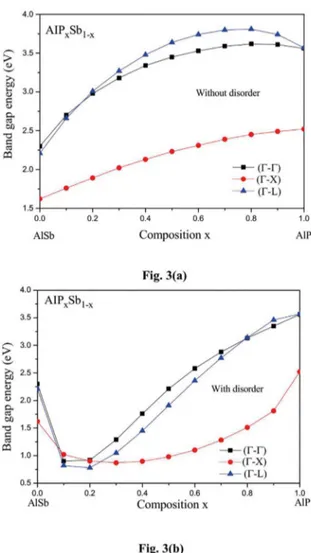Band Structure, Charge Distribution and Optical Properties of AlP
Texto
Imagem



Documentos relacionados
Objective: To evaluate the double-band and single-band techniques for anatomical reconstruction of the anterior cruciate ligament of the knee and demonstrate that the double-
Remelted zone of the probes after treatment with current intensity of arc plasma – 100 A, lower bainite, retained austenite and secondary cementite.. Because the secondary
The empty impurity energy levels below conduction band form a new conduction band minimum (CBM), and the occupied impurity energy levels above valence band act as new
This band can be ascribed to the optical band of the amorphous silicon (a-Si) and is indicative that the machining took place in the ductile mode. According
The spatial connement of carriers, the strong va- lence band mixing and conduction-valence band cou- pling lead to the observed complex subband dispersions with very interesting
The Ogg-McCombe effective Hamiltonian for the electron in the conduction band together with the non- parabolic and effective-mass approximations were used in a theoretical study of
The aim of the present work is to present the calculation of the electron energy levels of n-type delta-doped quantum wells in the conduction band of GaAs, including the effect
Intermittent catheterisation with hydrophilic-coated catheters (SpeediCath) reduces the risk of clinical urinary tract infection in spinal cord injured patients: a